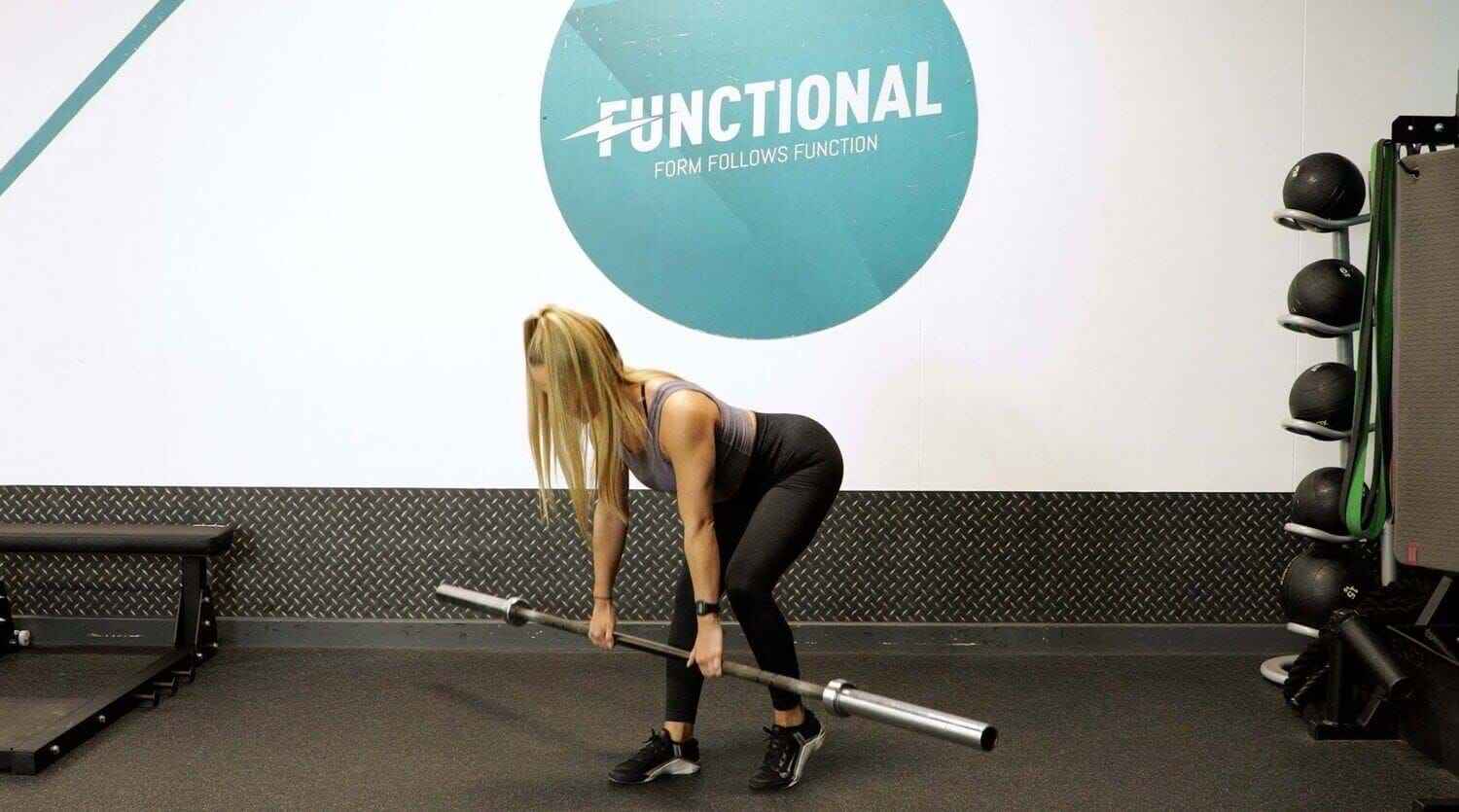Hiking Workout Plan

Why Train | 6-Week Plan | Workouts | Gym Exercises | Strength Exercises | Treadmill & Stairmaster | Home Exercises | HIIT Workouts | Bench Workouts | Full Body | Example Programmes | Tips | Tapering
Planning your next mountain adventure? Proper hiking preparation starts long before you pack your gear. Personal Trainer and Assistant Manager Phil Carpenter from PureGym Portsmouth North Harbour shares his expert advice for building the ideal hiking workout plan that prepares your body for the trail.
Why Is It Important to Train Ahead of a Hike?
Hiking is a lot more challenging than a casual walk in nature. Uneven terrain, steep elevation, and long distances mean hiking provides a cardio workout while targeting leg strength, core, and balance.
Training prepares your body to be strong for carrying loads over long distances and steep inclines, making the hike more enjoyable and reducing the likelihood of injury.
How to Build a 6-Week Hiking Workout Plan
The good news is that training for hiking is typically less intensive than other challenges such as a marathon, and takes less time to prepare for - especially if you are already active. Around 6 weeks should be enough to get you trail ready.
A good 6 week hiking training workout plan will follow a progressive structure to build strength, endurance, and mobility gradually, with an additional week for tapering before the hike itself.
Weeks 1-2: Foundation Phase
Build a strong base with moderate intensity strength training with bodyweight or light weights. Include 1-2 days a week of shorter hikes (30-60 minutes). Stay consistent with basic mobility work.
Weeks 3-4: Building Blocks
Increase the intensity of your strength exercises by adding resistance. In your cardio workouts, add intervals or hill climbs (2-3 minutes of high intensity). Start increasing endurance training length (1-2 hours of hiking with elevation). Include deeper stretches and more advanced movements to your mobility sessions.
Weeks 5-6: Peak Period
Strength training should include heavier weights and compound movements (deadlifts, squats, kettlebell swings). Cardio intervals should be high intensity, focusing on uphill sprints or fast incline walking. Do longer hikes (2-4 hours) with varying terrain. Focus on flexibility with dynamic movements and advanced yoga or Pilates.
The Best Workouts to Prepare for Hiking
The best workout for mountain hiking covers four areas:
Strength training: builds strength for carrying a pack, climbing inclines, and descending safely.
Mobility and stability: improves ankle and knee health and range of motion to help with uneven terrain.
Cardio and endurance: allows you to sustain effort over long distances and elevations.
Hike-specific conditioning: weighted pack practice and terrain exposure builds overall endurance and familiarity.
Top Gym Workout for Hiking Preparation
Hiking gym workouts are a great option for training strength, cardio, and mobility, with plenty of exercises and kit to choose from.
The main muscle groups used in hiking are the glutes, quads, calves, hamstrings and core, as well as the shoulders and upper back. Choose exercises which work these muscles for your strength workouts for hiking and backpacking.
Best Strength Exercises for Mountain Hiking
Here are some of the best hiking strength exercises to include in your workout plan:
Bulgarian split squats: builds single leg strength and balance which helps with uneven terrain.
Trap bar deadlifts: builds lower body strength and power to help with inclines, as well as upper body strength to help with carrying a backpack.
Overhead press: increases upper body strength to help with carrying heavy load.
Kettlebell swings: builds full body strength, power, and endurance.
Pull ups: pull ups build upper body strength and endurance, helping to maintain good posture when hiking with a backpack.
Walking lunges: walking lunges build single leg strength and stability and can help with range of motion.
Russian twists: improves core strength and rotation which can help with manoeuvring tricky trails.
Dead bugs: teaches the core to stay stable when the body is moving which can protect the back during hikes.
Farmers carries: builds overall strength and endurance, helping with walking while carrying heavy objects.
How to Use a Treadmill or Stairmaster for Hiking Training
Ideally, your hiking practice will take place outdoors in similar terrain to your planned hike. For the days this isn’t possible, doing a hiking workout on the treadmill or Stairmaster is a great alternative as it allows you to practice intense the uphill walking and climbing you’ll do when hiking.
For the treadmill, try alternating 1 minute of intense uphill walking or running with 1-2 minutes of moderate uphill walking for recovery for 20-30 minutes, followed by 10 minutes of moderate pace walking on flat ground.
If you’d prefer to do a Stairmaster workout for hiking, you can either alternate 1 minute of intense pace with 1-2 minutes of moderate pace, or pick a level that’s around 7/10 effort and keep at this pace.
Effective Home Workouts to Train for Hiking
If you can’t make it to the gym, doing a home workout for hiking can help to build the strength you’ll need on your hikes.
Step ups are one of the best home exercise for hiking, especially if you have a backpack you can load up for added weight. This strength and cardio exercise replicates hiking uphill, improving co-ordination and balance whilst building singular leg drive and core engagement. All you need is a sturdy bench, box, or high step, with an optional addition of wearing a weighted backpack, weighted vest, or holding dumbbells. Add a knee drive at the top for additional core and balance work.
Other exercises you can do at home include single leg squats and lunges, jump squats, calf raises, and single leg deadlifts.
Best HIIT Workout for Hiking
HIIT workouts for hiking can help to build the high-end fitness and endurance you'll need for longer hikes or steeper inclines and can be done at the gym or at home with no kit.
Cardio HIIT workouts: alternate hill sprints or fast incline walking with moderate paced walking.
Full body circuits: a 15-20 minute full body HIIT circuit is a great way to build strength and cardio endurance for your hikes. Alternate 30-45 second intervals with 15-30 seconds rest, choosing exercises like weight step ups, farmers carries, mountain climbers, and core work.
Lower body HIIT: if you're short on time, a HIIT workout is a good alternative to a longer leg workout. Choose exercises like split squats, step ups, box jumps, and lunges.
Incorporating Hiking Bench Workouts Into Your Routine
The gym bench is a good tool for hiking training – but we’re not doing bench press! Instead, use a bench for step-ups, Bulgarian split squats, and incline push-ups. These exercises replicate hiking movements and build strength and stability for hiking with a weighted pack.
Full-Body Hiking Prep Workouts: What to Include
Make sure your hiking prep follows a structure throughout the week, with at least one day of full rest of active recovery, and one day of mobility.
Day 1: Strength (legs and core)
Day 2: Cardio (hiking simulation) with interval training
Day 3: Mobility and recovery
Day 4: Strength (upper body and stability)
Day 5: Cardio (long hike or endurance training)
Day 6: Functional endurance training with circuit work
Day 7: Rest or active recovery
Example Hiking Workout Programmes
Beginner Hiking Workout Programme
If you’re new to hiking and planning on doing more moderate trails, your workout plan can focus on moderate cardio and basic strength movements. For cardio, 30 minute walks with hills, moderate incline treadmill walks, and short HIIT circuits are a great option. For strength work, choose exercises like bodyweight step ups, walking lunges, and dumbbell squats. Mobility work is key too – make sure to stretch before and after your workouts.
Intermediate Workout Plan for Hiking
Intermediate hikers can increase the intensity, following a workout plan that uses moderate weights, increasing cardio intervals to 2-3 minutes of high intensity work, and extending endurance training to 1-2 hours with elevation.
Advanced Workouts for Mountain Hiking
Advanced hikers should add heavier weights to their workout plan, plus high-intensity uphill sprints, and longer hikes (2-4 hours) on varying terrain.
Tips for Injury Prevention While Training
The best way to avoid injury when training for a hike is to avoid increasing the intensity too quickly. Gradually increase the difficulty of your exercises, aiming for around 3-5% increase in weights every 1-2 weeks, adding 1-2 minutes of cardio intervals each week, and increasing the incline by 5-10% each week. Track hikes using apps like Strava so you can see your improvements in distance, time, or elevation gain.
Incorporating hip, ankle, and shoulder mobility work will help to avoid injury too.
What to Do the Week Before a Big Hike
As your big hike gets closer, reduce training volume by 40-50% but maintain movement quality. Focus on light exercise to prevent stiffness, and spend your extra free time testing all of your equipment with loaded pack practice - and repping your hydration and nutrition!
For more tips, check out our guide to long distance walking here. Ready to get out on the trails? Book a session with one of our Personal Trainers who will get you fit and strong with a hiking workout plan. Find your nearest PureGym to get started.


